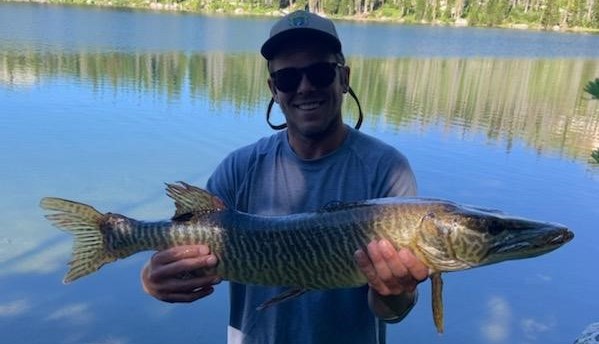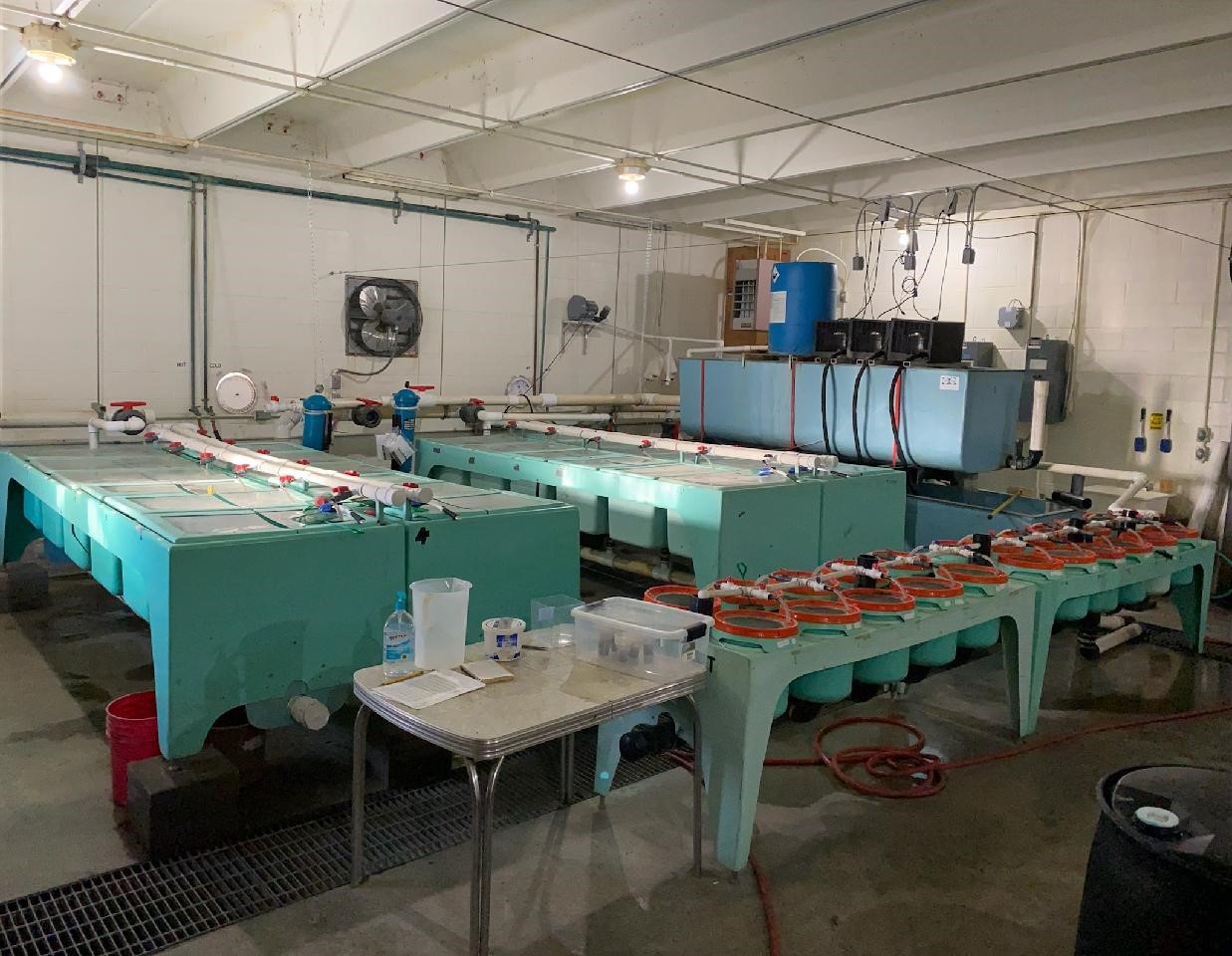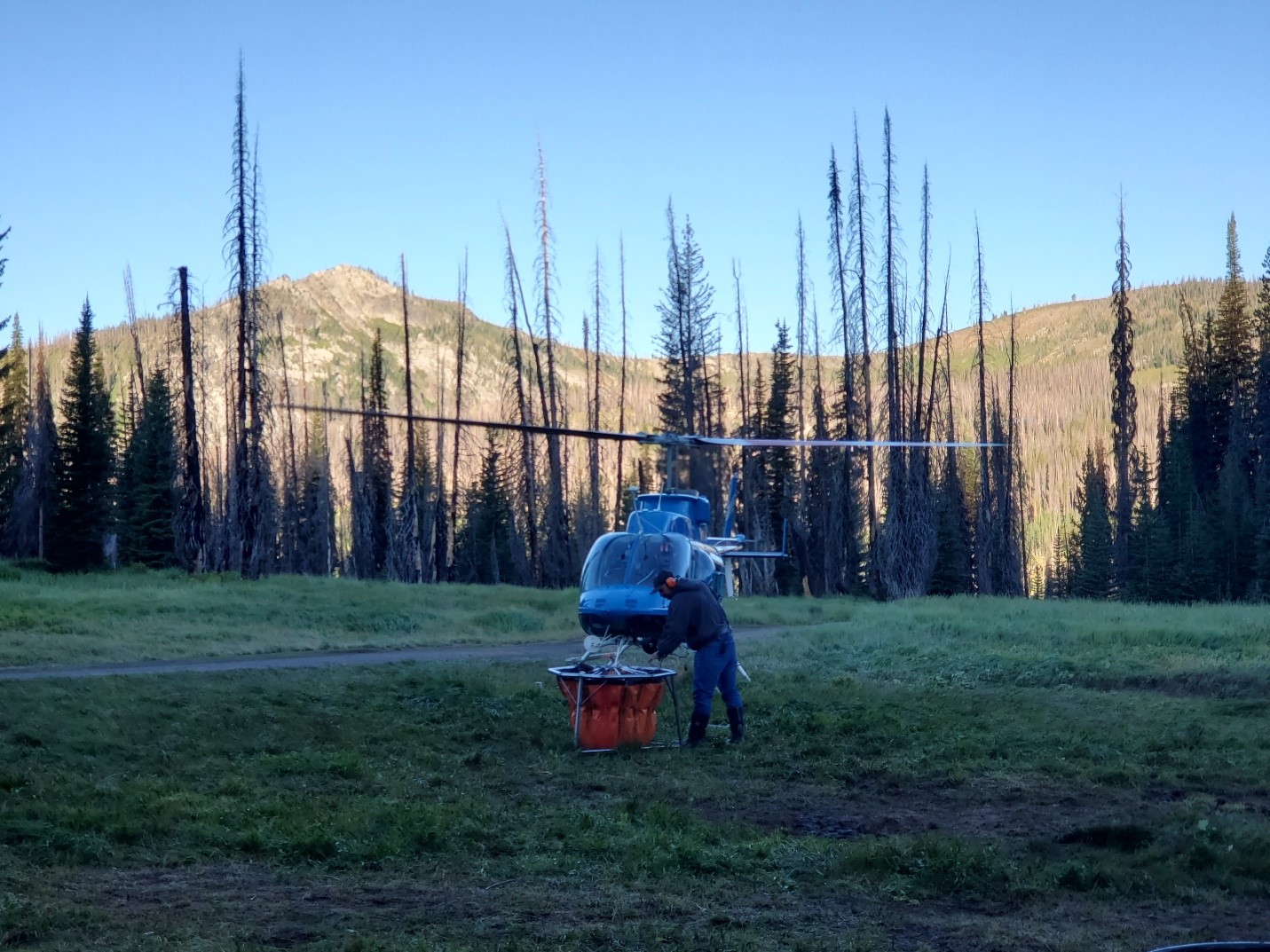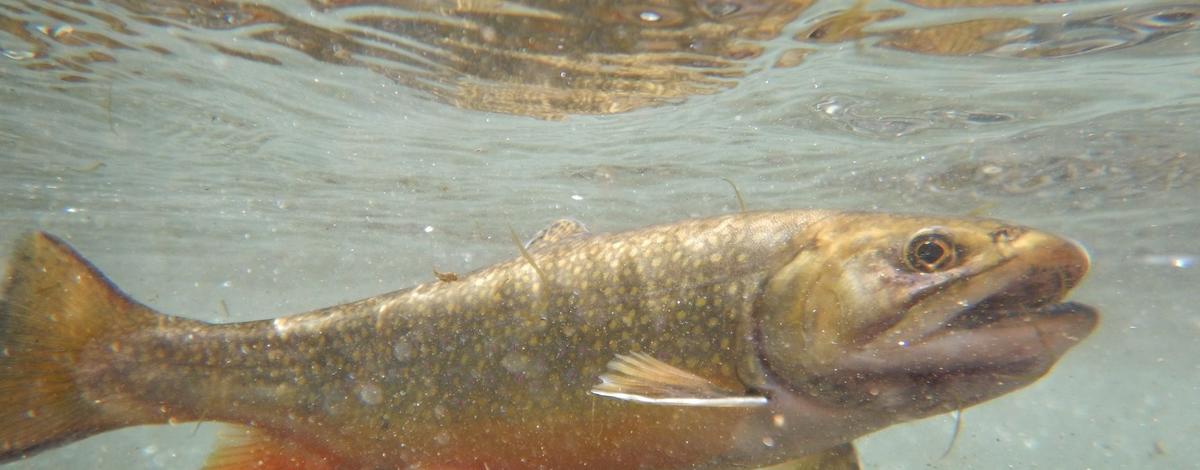
Caption: Brook trout can be found in many alpine lakes in Idaho.
Although not native to the western United States brook trout have been introduced throughout the west and now thrive in many western waters, including alpine lakes in Idaho. They are perhaps the tastiest trout you will find, their coloration can be spectacular, and they can achieve high abundance, so many anglers enjoy pursuing them for table fare or just to rack up high catch rates. Unfortunately, outside their native range, brook trout often negatively affect native fish species, especially cutthroat trout and bull trout. Brook trout also can become so abundant that the size of fish in the population becomes stunted and unappealing to anglers.

Caption: Tiger musky are stocked at about 11 inches in a few Idaho alpine lakes, but they can grow to be very large when brook trout are present.
For these two reasons, biologists occasionally attempt to replace brook trout in alpine lakes with other species of trout that won’t negatively impact native trout and that grow to a better size. But first you have to get rid of the brook trout, which can be a challenge in and of itself. One way to do it is to introduce predatory fish like tiger musky or tiger trout, which in some lakes can eat all the brook trout present. Another method is to chemically treat the lake to kill all the brook trout. While these two techniques are used most often by biologists, they are not always feasible, or successful.

Caption: Super-male brook trout brood stock production at Hayspur Fish Hatchery
One new tool that biologists with the Idaho Department of Fish and Game have been investigating is stocking alpine lakes with super-male brook trout (also known as Trojan brook trout, YY brook trout, and MYY brook trout) that are created and reared in a Department hatchery. While normal brook trout males have one X chromosome and one Y chromosome (like humans do), they can be reared to have two Y chromosomes. The nuts and bolts of how this is done is complicated, but it is important to note that YY-male brook trout are produced through careful selective breeding and does not use any genetic modifications. Once they are stocked into the wild, all the offspring they produce when they spawn with wild female brook trout will be male fish. In theory, this can skew the sex ratio of the population to being all males, and once there are no more females in the population, there are no more eggs to be laid, meaning the population is no longer viable. Within a few years, all the male fish will die off, and at that point the lake can be restocked with cutthroat trout or rainbow trout.

Caption: Helicopter and bucket used to stock 3-inch or 10-inch brook trout in Idaho alpine lakes.
Biologists with the Idaho Department of Fish and Game are currently evaluating whether such a stocking program can be a cost-effective method of removing brook trout from alpine lakes. Stocking in a few lakes in central Idaho has been ongoing for several years now, using either fingerling-sized fish (3-4 inches) or catchable-sized fish (9-10 inches). Evaluating the success of the program will require a few more years of data, because computer models have predicted that at least 5-10 years of stocking will be needed for complete population collapse. Other western states have also joined Idaho in evaluating similar stocking programs, because what works in one location may not always work in other areas, due to differences in lake characteristics and other variable factors.

